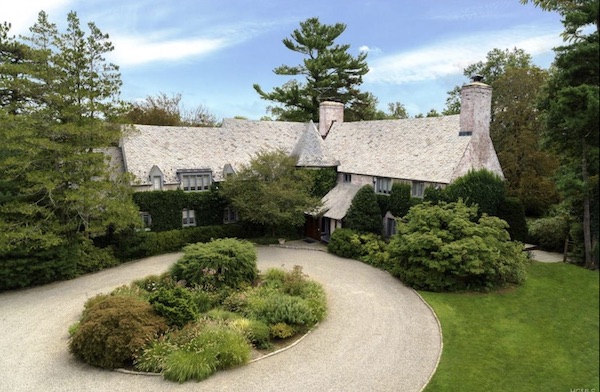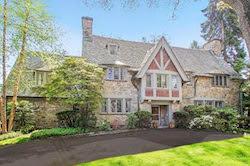Historic Preservation Law is Tested at Hearing of the Scarsdale Board of Trustees
- Tuesday, 09 February 2021 12:28
- Last Updated: Thursday, 11 February 2021 12:27
- Published: Tuesday, 09 February 2021 12:28
- Joanne Wallenstein
- Hits: 2637
 The owners of an iconic home at 11 Dolma Road in Scarsdale made their third attempt to gain approval to knock it down at a hearing before the Scarsdale Board of Trustees on Thursday February 4. The applicants were turned down by the Committee for Historic Preservation (CHP) following a September 29, 2020 hearing and moved to appeal that decision to Scarsdale’s Board of Trustees.
The owners of an iconic home at 11 Dolma Road in Scarsdale made their third attempt to gain approval to knock it down at a hearing before the Scarsdale Board of Trustees on Thursday February 4. The applicants were turned down by the Committee for Historic Preservation (CHP) following a September 29, 2020 hearing and moved to appeal that decision to Scarsdale’s Board of Trustees.
Representing the homeowners were attorneys Andrew Schriever and Lawrence Graham from Cuddy and Feder as well as architectural historian Dr. Emily Cooperman. Daniel Pozin of McCarthy Fingar LLP acted as counsel to the Board of Trustees and the Committee for Historic Preservation was represented by James Staudt of McCullough, Goldberger and Staudt as well as Professor Andrew Dolkart, who teaches at Columbia University and was the author of the 2012 Reconnaissance Level Cultural Resource Survey Report of Scarsdale.
The survey recommended homes, landmarks and neighborhoods for historic designation.
Schriever presented the applicants' case and argued that the home did not meet the initial criteria for preservation, which says, “In making a determination whether to grant an application for a certificate or to deny such application and require that the building in question be preserved, the Committee shall consider the level of significance in American history, architecture, archeology, engineering and culture present in the building, as well as the integrity of location, design, setting, materials and workmanship.”
He claimed that it had no historical significance as it was not linked to a historic event or site. He argued that the code itself was “vague and overbroad,” and possibly unconstitutional. On the matter of whether or not the home was the work of a master, architect Julius Gregory, he said, “if an outhouse is designed by Frank Lloyd Wright, does that mean it’s worthy of preservation?”
Dr. Cooperman said that Scarsdale code did not conform to the criteria in the National Register of Historic Places. Turning to the home, she said, since renovations were done to the windows and dormers and a small portion of the roof line, she claimed the home had lost its integrity and authenticity. She said, “The entrances and windows have been changed, the roof form is different and the materiality has been altered.”
She sought to demonstrate that Julius Gregory was not a master as he lacked “greatness,” was not named a fellow of the AIA and entered competitions but did not win them. Graham added, “he published no monographs,” and Cooperman said Gregory was known for his cottages rather than his mansions.
Defending the home and the process, Attorney James Staudt said, “If ever credit should be given to the CHP it is in this case. There are 600 pages of documentation. The record demonstrates that both sides were afforded opportunities to supply evidence…. The decision provides clear articulate reasons and thoughtful discussion of how Julius Gregory advanced architecture into the modern age…. it is difficult to fathom a more thorough process.”
He warned the Trustees, “Don’t be distracted by the constitutional argument. There is more than enough evidence under any standard of proof. The words are clear and easy to understand. The facts and analysis are clear. They are not vague.”
Andrew Dolkhart explained that he is an architect and preservationist and a full tenured professor of historic preservation at Columbia University. He has written several books and won awards. He said, “I feel very strongly that 11 Dolma Road meets the criteria for preservation.”
He said, “Historic preservation is no longer about 'George Washington slept here." And while the defendants insisted that the house was not "unique," Dolkart responded the word "unique" is not in Village Code; instead, it speaks to "broad patterns."
Dolkart said, “11 Dolma meets three of the historic preservation criteria. It is part of a broad pattern of village history. Why? The train, the Bronx River Parkway, the decline of single family homes in the city, and the growing appeal of country life for wealthy households; (the original owner) W. Wallace Lyon commissioned the house during a crucial period in the history of the Village.”
About Gregory he said, the house is “unquestionably the work of a master of suburban housing. He can’t be pigeonholed as a designer of small houses. He created fine Tudors, English Normans and revival homes. Gregory was well respected in the 1920’s and was chosen to design homes in Fieldston. His work is a bridge between traditional and modern design and embodies distinctive characteristics, and has high artistic value.”
Dolkhart said the house displays a sophisticated use of materials including stone and brickwork, a tower, and half timbering. In 2017, the CHP voted to preserve 53 Old Orchard Lane, also designed by Julius Gregory
In 2017, the CHP voted to preserve 53 Old Orchard Lane, also designed by Julius Gregory
Responding to Cooperman he said, “The house still has integrity. Buildings can be listed that have changed over time – in fact all the buildings that I have written applications for the national register have changed over time. The alterations on the front are relatively minor and were carefully done to blend in with the rest of the house.”
He continued, “Does this building still read as Julius Gregory’s English building? The answer would be yes. It has the steep roofs, patterned brickwork, stone and brick it still has the tower and the picturesque composition. These are the features that are important to a French Norman house.”
He called 11 Dolma “One of the most outstanding houses in Scarsdale,” saying, “It meets multiple criteria for preservation and I hope you will vote to preserve this piece of Scarsdale’s heritage.”
Staudt added, “The role of this board is to apply the law as written -- not to rule on the law. The historic preservation code has been upheld for half a century.”
He ended by saying, “I went to look at the house the other day and saw it and thought – if I were to make a movie about the 20’s in Scarsdale I would film it on Dolma Road in this house.”
Following the hearing the board adjourned into executive session. The Board of Trustees will vote on the appeal at a future meeting of the Board of Trustees.